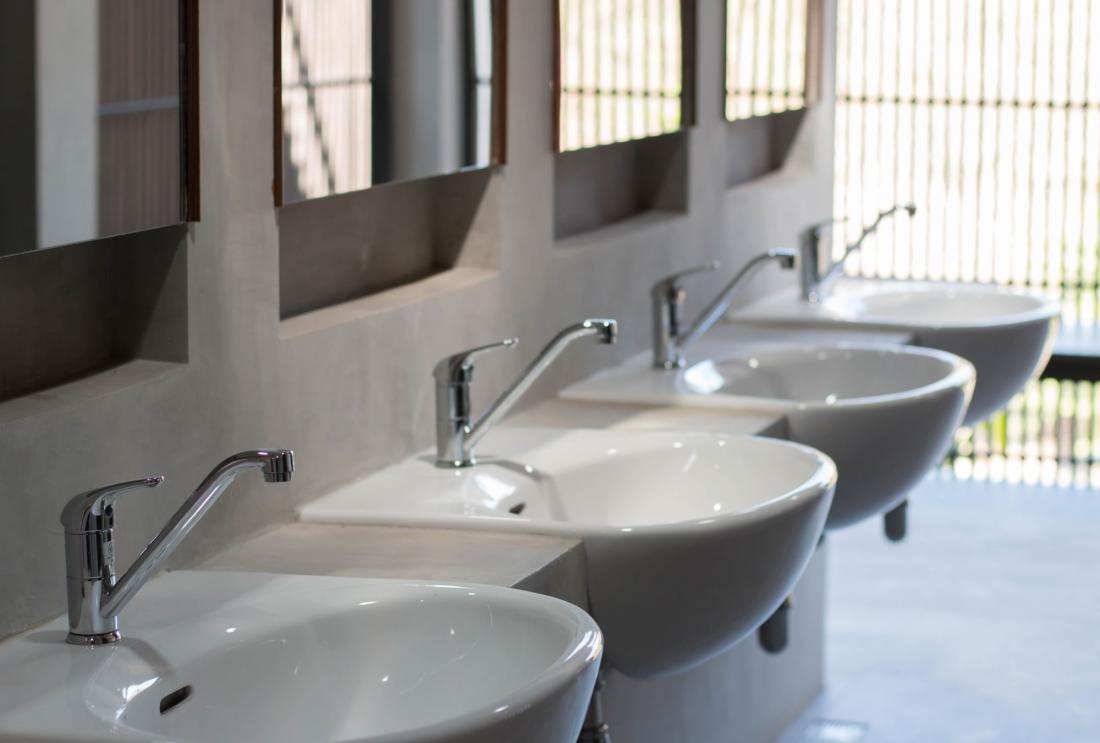Using Peer Pressure to Encourage Handwashing in Argentina
- Men and boys
- Urban population
- Communicable diseases
- Preventive health
Handwashing is a simple and effective way to reduce illnesses, but changing individual behavior can be challenging. Researchers examined the impact of peer pressure on handwashing behavior by varying whether men using a restroom in Buenos Aires, Argentina were observed by another restroom user. They found that being observed increased urinal flushing by 26.7 percent and handwashing by 19 percent, suggesting that peer pressure might be an effective way to increase socially desirable behaviors.
Policy issue
Handwashing with soap is a simple and effective way to reduce illnesses such as diarrhea and respiratory disease. However, handwashing is practiced at dangerously low levels in many countries.1 Peer pressure might be an effective way to encourage handwashing behavior since it is a widely encouraged activity. Existing evidence on social pressure to increase handwashing, however, suffers from methodological problems such as small sample size and self-reporting bias, in which respondents are likely to report taking actions that are viewed as socially desirable even when they did not take those actions. Can peer pressure encourage individuals to wash their hands?
Context of the evaluation
In 2012, lower respiratory infections (which handwashing can reduce) were among the top three causes of death in Argentina, representing 6.8 percent of deaths. For children under five, acute respiratory infections and diarrhea caused 9 and 1 percent, respectively, of deaths in 2013.2

Details of the intervention
Researchers examined the impact of peer pressure on handwashing behavior by varying whether men using a restroom at Universidad de San Andrés in Buenos Aires were observed by another restroom user.
Researchers first identified three male restrooms that allowed observers to reliably hear whether a user flushed the urinal and washed his hands. For each user who entered the restroom, researchers alternated assignment between the treatment and comparison group. When a treatment group-assigned individual entered the restroom, an observer entered the restroom eight seconds afterwards and placed himself at another urinal. The observer acted as another user of the restroom without flushing the urinal or washing his hands and stayed in the restroom until the participant left. For individuals assigned to the comparison group, the observer waited outside the restroom and listened to determine whether the participant flushed the urinal and/or washed his hands. To avoid any possible influence by a third party, observers excluded instances when other people were also using the restroom.
Results and policy lessons
Individuals were more likely to flush the urinal and wash their hands when someone else was present in the restroom. When no one else was present, 55.8 percent of men flushed the urinal. When someone else was present, men were 14.9 percentage points more likely to flush the urinal, a 26.7 percent increase. Similarly, when no one else was present, 66.3 percent of men washed their hands after using the urinal. When someone else was present, men were 12.5 percentage points more likely to wash their hands, an 18.9 percent increase. These findings support the idea that peer pressure can encourage socially desirable behaviors.
UNICEF. 2015. “La falta de acceso a la higiene puede poner en peligro la nueva agenda para el desarrollo, dice UNICEF.” UNICEF Argentina, October 15. Accessed February 23, 2017. https://www.unicef.org/argentina/spanish/media_31144.htm
World Health Organization. 2015. “Argentina: WHO statistical profile.” Geneva: WHO. Accessed February 23, 2017. http://www.who.int/gho/countries/arg.pdf